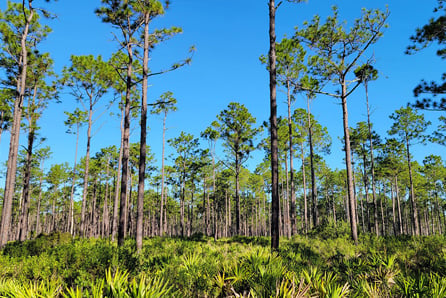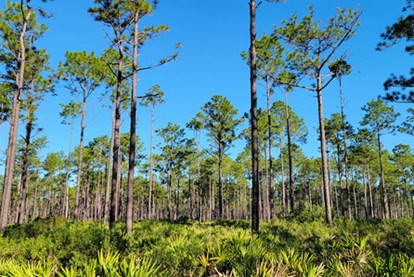Wildlife Habitats
Thursday, June 19, 2025
Case Study: The Paseo & Greenways at Riverland – Eco-Friendly Connectivity in Port St. Lucie, Florida
Overview
The Paseo and greenway system at Riverland redefines sustainable living and connectivity within a master-planned community. Spanning over 5 miles of eco-friendly pathways, this pedestrian, bicycle, and golf cart-only network links residents to every major amenity—including parks, arts, wellness, sports, and a Town Center—without ever needing to get into a car. The design not only significantly reduces the community’s carbon footprint but also fosters an active, vibrant lifestyle centered around nature and neighborhood connection.

Background
Riverland, a 4,000-acre master-planned community in Port St. Lucie, is anchored by the vision of environmental stewardship, community wellness, and a car-free lifestyle. The 2-mile public Paseo greenway, alongside an additional 3+ miles of private greenways and internal community pathways, creates a unique linear park system that is both a transportation network and a gathering place.
The Paseo itself is a landscaped linear park, thoughtfully designed with mature trees, flowering archways, meditation zones, and gathering spaces—all built exclusively for non-vehicular travel. This visionary infrastructure supports walking, biking, golf-cart commuting, outdoor fitness, and spontaneous social interaction, creating a model for sustainable, lifestyle-driven development.
Eco-Friendly Design and Amenities
The Paseo and greenways are more than just transportation routes—they’re a living part of Riverland’s culture and ecosystem:
- Pathway Network
- Over 5 miles of interconnected, car-free paths
- Includes 2 miles of public Paseo greenway, 1.5 miles of private extension, and community-exclusive greenways
- Sustainable Features
- Heavily landscaped with mature trees, native plantings, and shaded medians
- Designed to minimize car usage, reducing carbon emissions community-wide
- Rest & Recreation Zones
- Meditation areas with boulders and benches
- Picnic tables with built-in chessboards
- Scenic seating areas for socializing and reflection
- Outdoor Lifestyle Integration
- Hosts events like the annual Riverland 5K, charity walks, golf cart parades, and sunset gatherings
- Supports daily activities such as dog walking and cycling
Seamless Connectivity
The Paseo system connects Riverland residents to a wide range of amenities—all accessible without a car:
- Sports & Racquet Club: 24 acres with a 51,000 sq. ft. Wellness & Fitness Center
- Arts & Culture Center: 5 acres with an 11,550 sq. ft. Creativity Hub and outdoor event spaces
- Multiple City Parks: Including dog agility parks, green spaces, and multi-sport fields
- Riverland Town Center: Publix grocery store, restaurants, salons, veterinary care, golf cart services, and more—all reachable via the Paseo
Results
The Paseo and greenway system has yielded significant benefits:
- Reduced carbon footprint by decreasing reliance on automobiles for daily activities
- Promoted community wellness through outdoor activities, exercise, and social connection
- Enhanced environmental impact by preserving green space and planting mature trees
- Fostered a unique sense of place with vibrant gathering spots and lifestyle programming
- Created a fully integrated living experience where every need is accessible without a car
- This results section is a bit repetitive since you discussed these benefits in length above.
Conclusion
Riverland’s Paseo and greenway system exemplifies how infrastructure design can drive both environmental sustainability and human connection. With walkable access to world-class amenities, scenic green spaces, and a community-driven atmosphere, Riverland offers more than a home—it offers a new way of life rooted in harmony with nature and each other.

